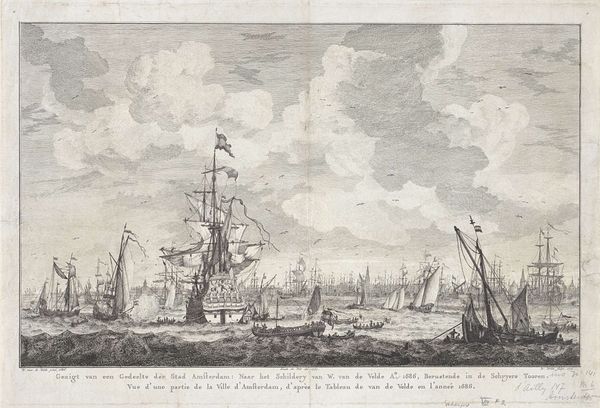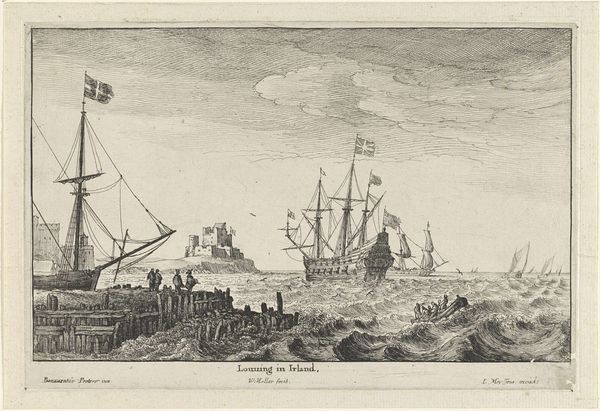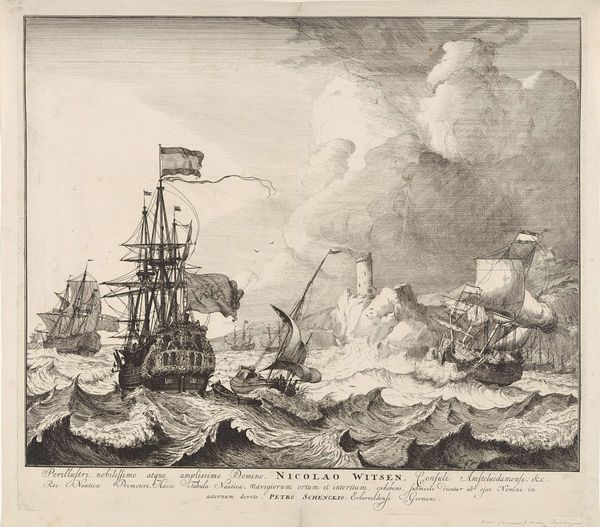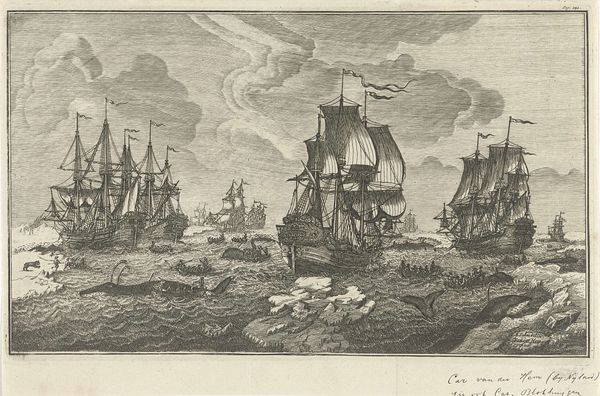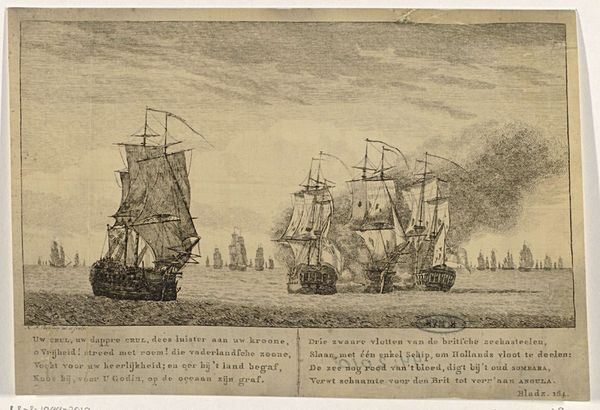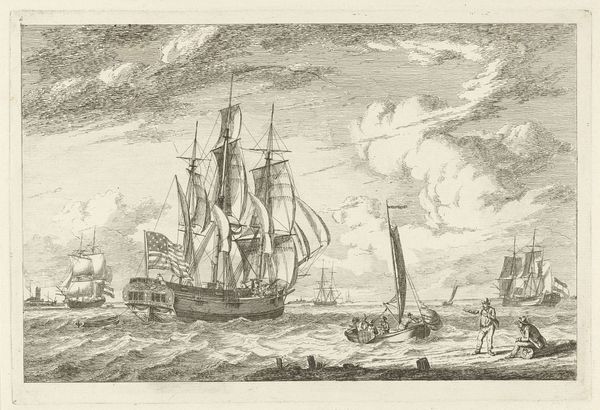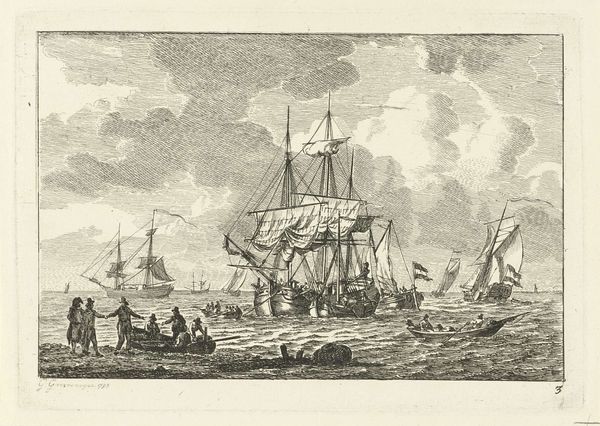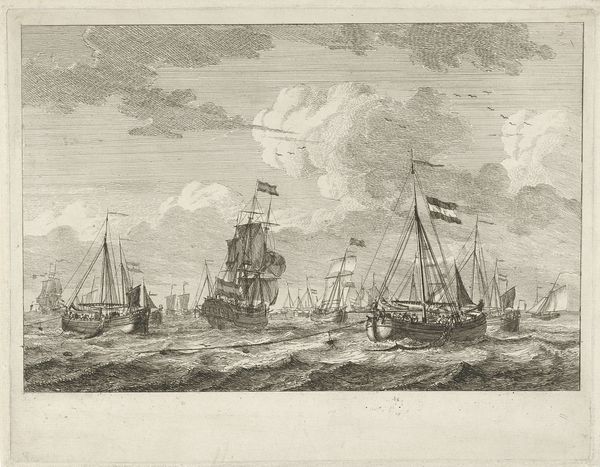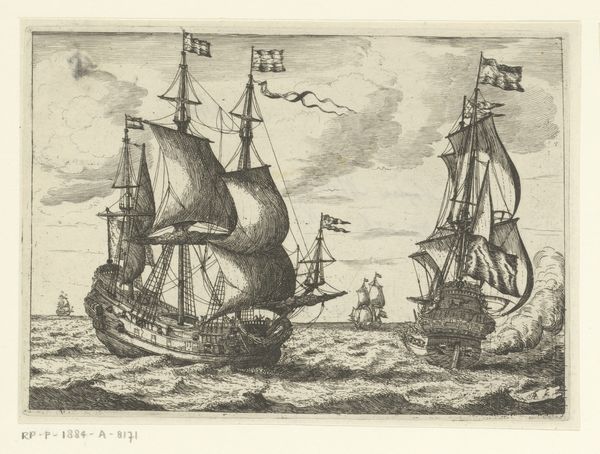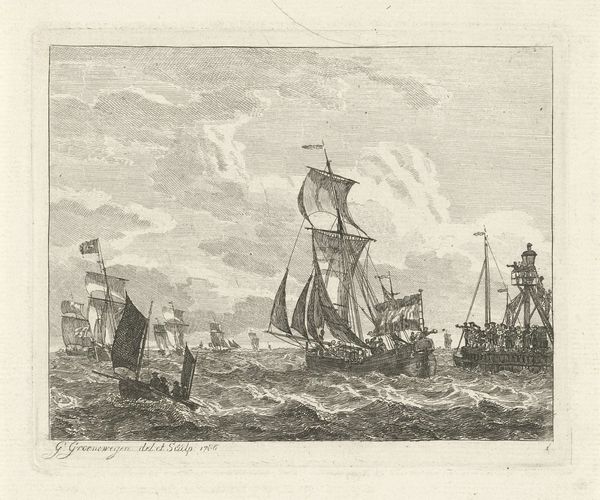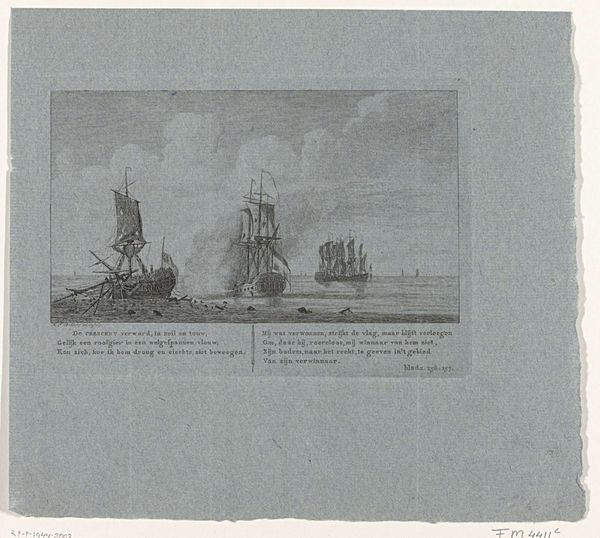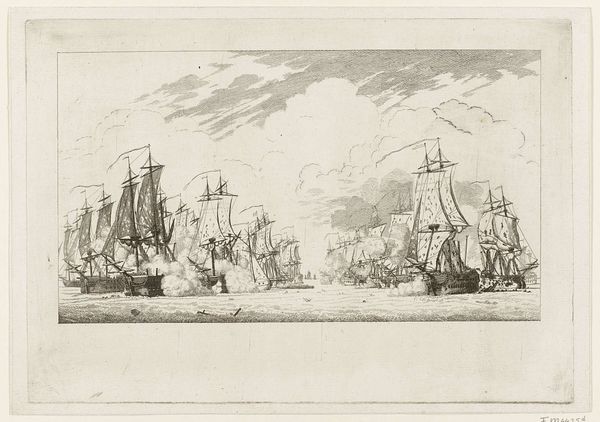
Zeeslag bij Dungeness tussen de Staatse vloot onder Tromp en de Engelse vloot onder Blake, 1652 1652 - 1653
0:00
0:00
print, engraving
#
baroque
#
dutch-golden-age
# print
#
pen sketch
#
landscape
#
cityscape
#
history-painting
#
engraving
Dimensions: height 175 mm, width 268 mm
Copyright: Rijks Museum: Open Domain
Curator: The print we're looking at, entitled *Zeeslag bij Dungeness tussen de Staatse vloot onder Tromp en de Engelse vloot onder Blake, 1652,* or "The naval battle at Dungeness between the Dutch fleet under Tromp and the English fleet under Blake, 1652," offers us a snapshot of 17th-century naval warfare during the Anglo-Dutch Wars. Created around 1652-1653 by an anonymous artist, it exemplifies the detailed printmaking characteristic of the Dutch Golden Age. Editor: Wow, there’s a sense of frenetic energy. I mean, even rendered in the relatively stark medium of engraving, the churning water and the billowing smoke…it really captures the chaos and, let’s be honest, the raw violence of naval battles. It makes me almost seasick just looking at it! Curator: The engraving technique allows for incredible detail. If you look closely, you’ll notice the rigorous attention paid to the ships' rigging, the individual figures on deck, and even the patterns of the waves. We have to consider, too, the function of prints like this: they were essentially mass media, bringing news and shaping public perception. So, it serves as both artwork and historical document. Editor: I imagine that creating a print like this required tremendous skill. Engraving on a copper plate is labor-intensive, and think about the social conditions implied here! You have workshops employing artisans, managing distribution, appealing to specific patrons or a wider public—and the imagery had to be exciting, vivid to justify the purchase for a wall display. What’s more: a kind of romanticized history is constructed right here, which, in turn, feeds political agendas. Curator: Exactly. The print plays a vital role in shaping national narratives. The battle itself was a significant moment in the First Anglo-Dutch War, a conflict driven by economic rivalry. Looking beyond aesthetic considerations, we begin to see this work functioning as propaganda, subtly promoting the strength and capabilities of the Dutch fleet, of their maritime prowess in the European trade environment. Editor: Considering that the original printing matrix was etched in metal and then pressed onto paper, that really gets me thinking about distribution chains. Also I keep wanting to know—who were the actual engravers? How was this labor distributed amongst many in a commercial art industry, a factory? I almost feel that the heroic event celebrated is belied by all that it takes, the sheer mechanical energy, to deliver this one print into eager hands! Curator: By viewing such pieces as more than just aesthetic artifacts we see into the cultural, political, and economic dynamics of its time. Editor: To sum up, it reminds us that even a static image contains a whirlwind of stories about power, labor, and the ongoing construction of history.
Comments
No comments
Be the first to comment and join the conversation on the ultimate creative platform.
